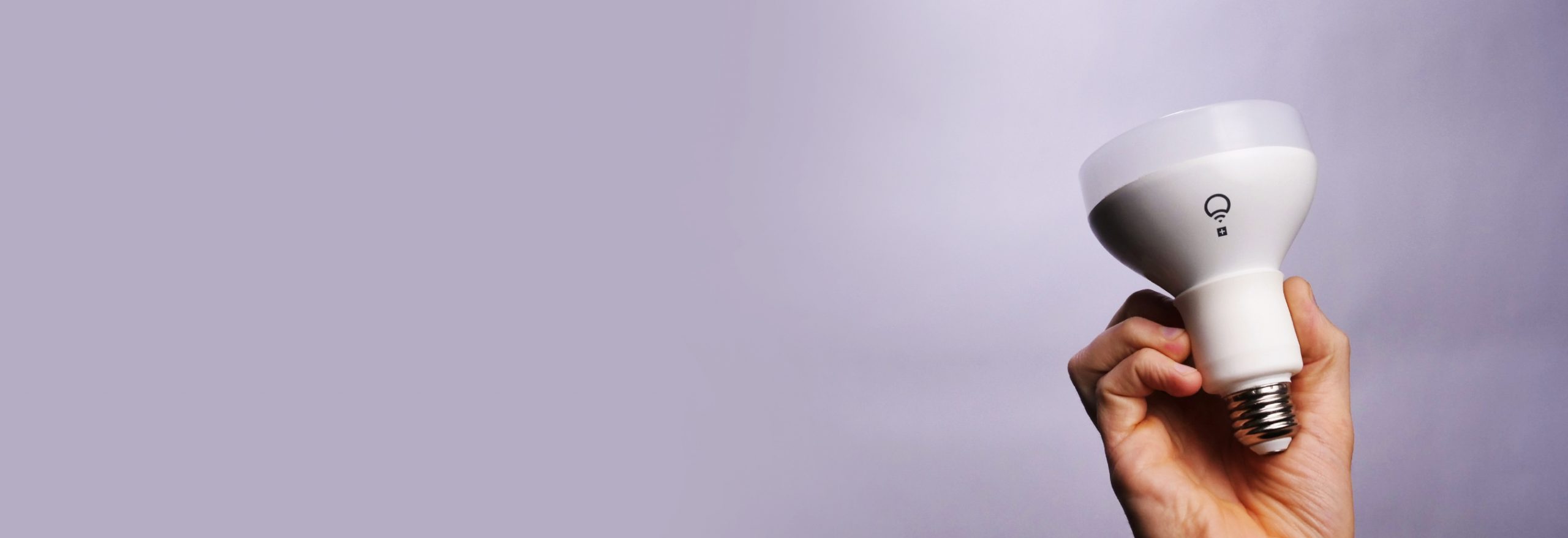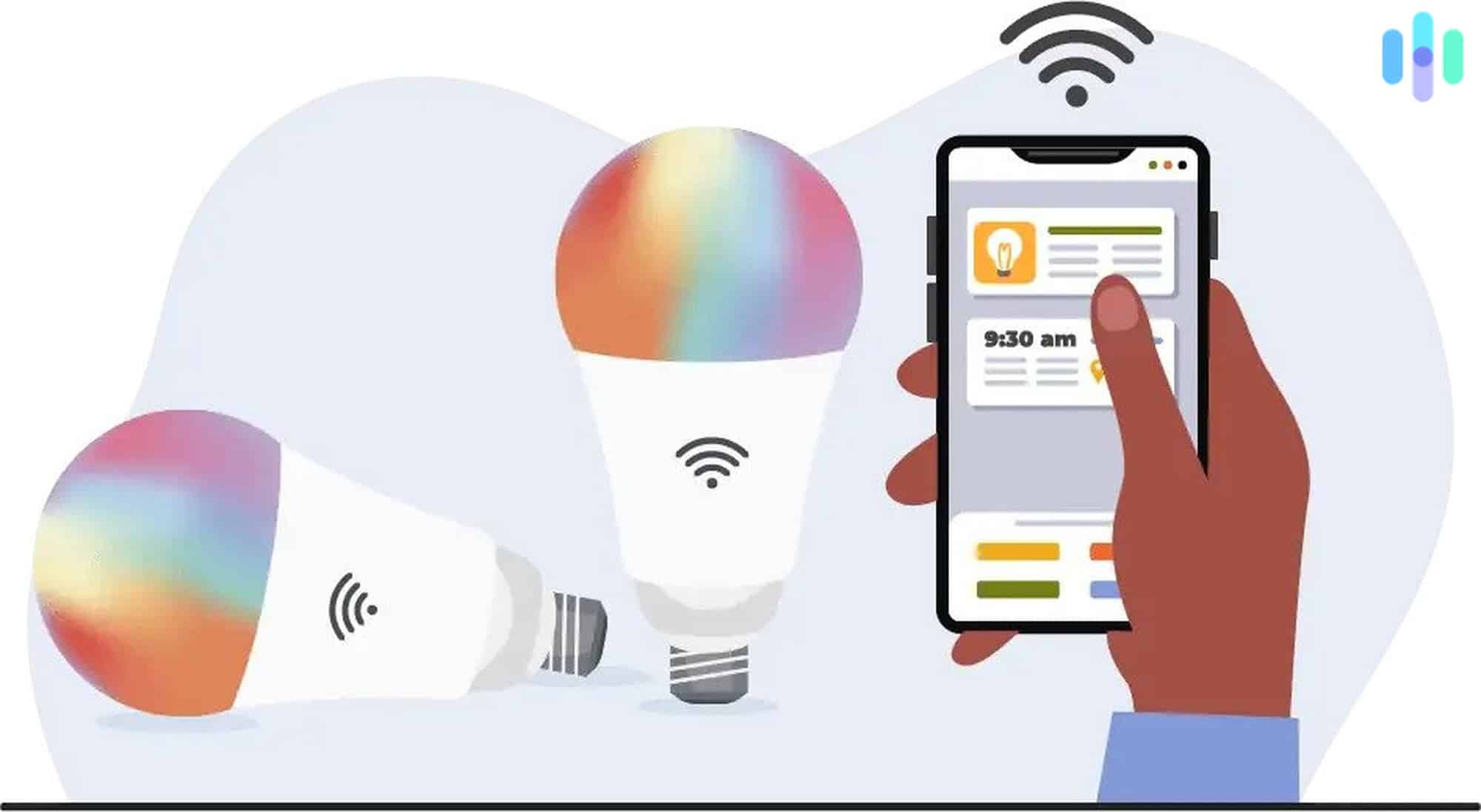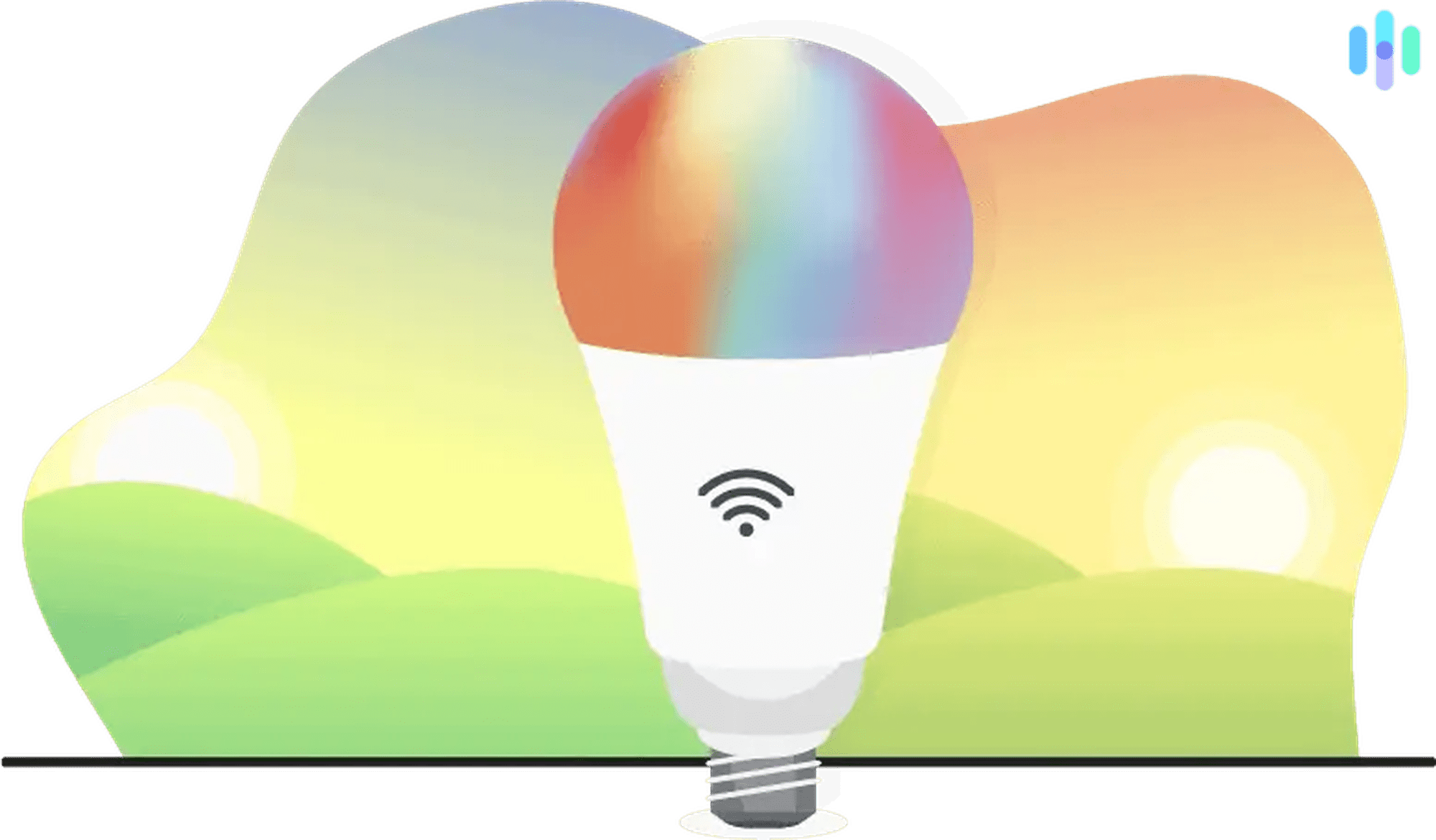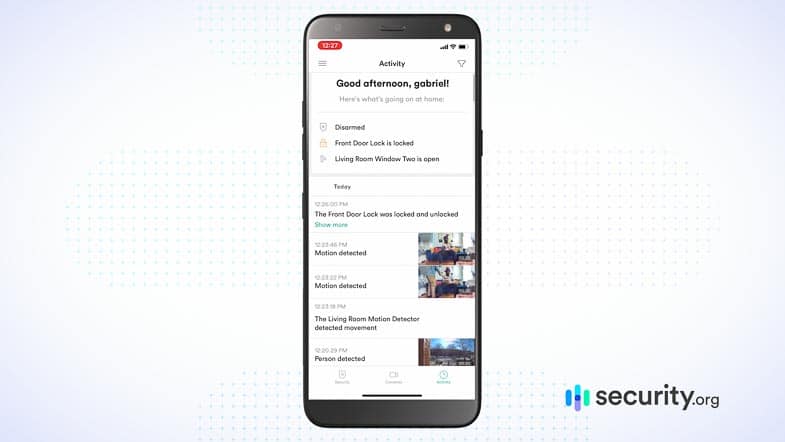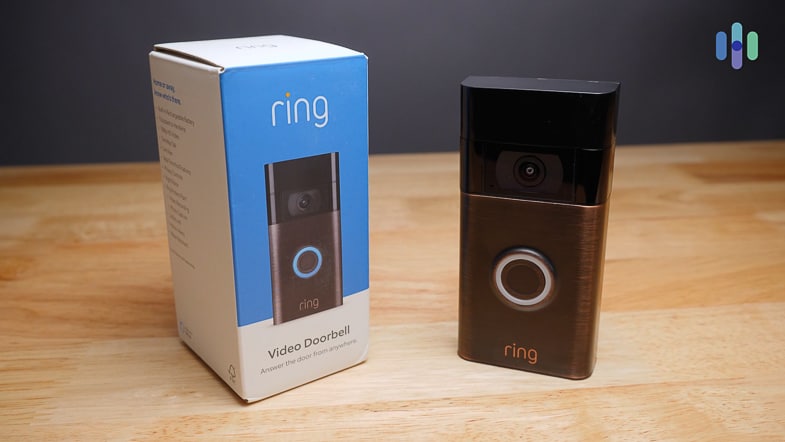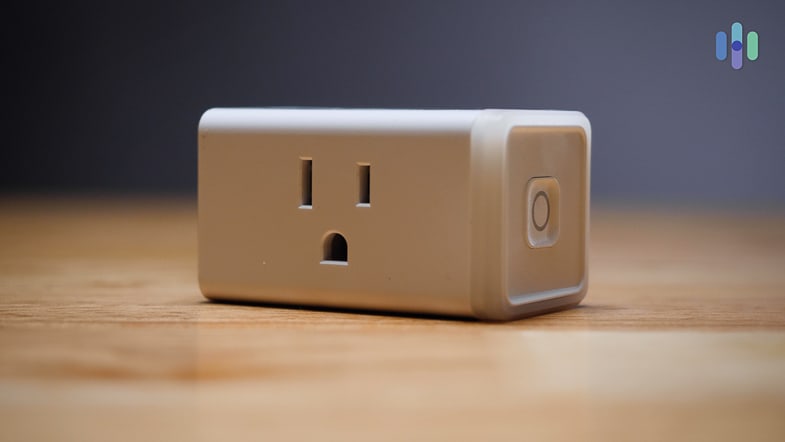For us and many smart home users today, smart bulbs were the gateway to home automation. Our first smart home devices were a pair of color-changing smart bulbs we installed in our living room. We were immediately hooked; just two weeks later, a box of more than 15 smart bulbs arrived at our doorstep and we made all the lights in our home smart lights.
You’re probably wondering how much all that cost us. Believe it or not, less than $200. Yes, there are smart bulbs out there that cost $60 apiece, but you can grab decent ones for much less than that. Let’s delve deeper into how much smart bulbs cost.
How Much Are Smart Lights?
The cost of smart lights varies based on a number of factors, such as these:
- Company
- Indoor/outdoor usage
- Wired vs. wireless
- Requirement of a hub
- Bulb vs. lamp
On average, smart lights cost around $42 each. But within that average is a huge range, from just $2.24 for the Cree 60W Bulb up to $90.35 for the highly sought-after Philips Hue Decorative Candle.
| Product name | Price (low to high) |
|---|---|
| Cree 60W Bulb | $2.24 |
| Wyze Bulb | $7.99 |
| Sylvania Osram 65W Bulb | $13 |
| Ring A19 | $14.99 |
| Bulbrite Standard 40W | $19.99 |
| Bulbrite Standard Globe 60W | $19.99 |
| Bulbrite Standard Color | $20.49 |
| Ring PAR38 | $24.99 |
| Ring Steplight Battery | $24.99 |
| Ring Pathlight Battery | $29.99 |
| Ring Solar Steplight | $29.99 |
| Kasa Smart TP-Link Multicolor LB130 | $29.99 |
| Ring Solar Pathlight | $34.99 |
| Ring Spotlight Battery | $39.99 |
| eufy Lumos Smart Bulb | $39.99 |
| Philips Hue White and Color Bulb | $45 |
| Ring Floodlight Battery | $49.99 |
| Ring Wall Light Solar | $59.99 |
| LIFX BR30 Bulb | $59.99 |
| LIFX Mini Light Bulb | $60.86 |
| Philips Hue Bloom Table Lamp | $69.99 |
| Philips Hue Bar Light | $69.99 |
| Ring Floodlight Wired | $69.99 |
| LIFX A19 With Infrared Night Vision | $79.99 |
| Ring Solar Floodlight | $89.99 |
| Philips Hue Decorative Candle | $90.35 |
| Average | $42.30 |
Smart bulbs are typically more expensive than your average LED bulbs, but the ones on the cheaper side aren’t much more expensive. The cheapest we saw was the 60-watt Cree smart bulb that costs a couple of dollars.
Buying just one or two bulbs is a good idea if you’re testing the waters, but once you get the hang of it and you decide on a smart bulb to use, you can save by buying in bulk. For example, a Wyze Bulb costs $7.99 per piece, but a four-pack costs $29.99. You’ll save $2.
On that note, it’s usually best to use one brand for all your smart bulbs. That’s because each smart bulb brand uses a different app for control (more on that later). If all your bulbs are from the same company, you can use one app to control the lighting in different parts of your house.
Note: Even though smart LED bulbs cost more than incandescent bulbs initially, they can save you money over the long term, as they use less energy and last longer.
What Is a Smart Bulb?
A smart bulb is typically a LED bulb that can connect to a larger smart home system through a variety of communication technologies. There are smart bulbs that connect to a hub via Bluetooth, Zigbee, or Z-Wave, and then that hub bridges their connection to Wi-Fi. Others connect directly to your router.
The main feature of smart bulbs is that you can control them using a smartphone1 (through a companion app) or your voice (via Alexa, Google Assistant, or Siri, if compatible). Additionally, most smart bulbs can integrate with other smart home equipment or even a whole smart security system, allowing you to create automations, scenes, and schedules. For most people, smart bulbs are an easy first step in creating a smart home.
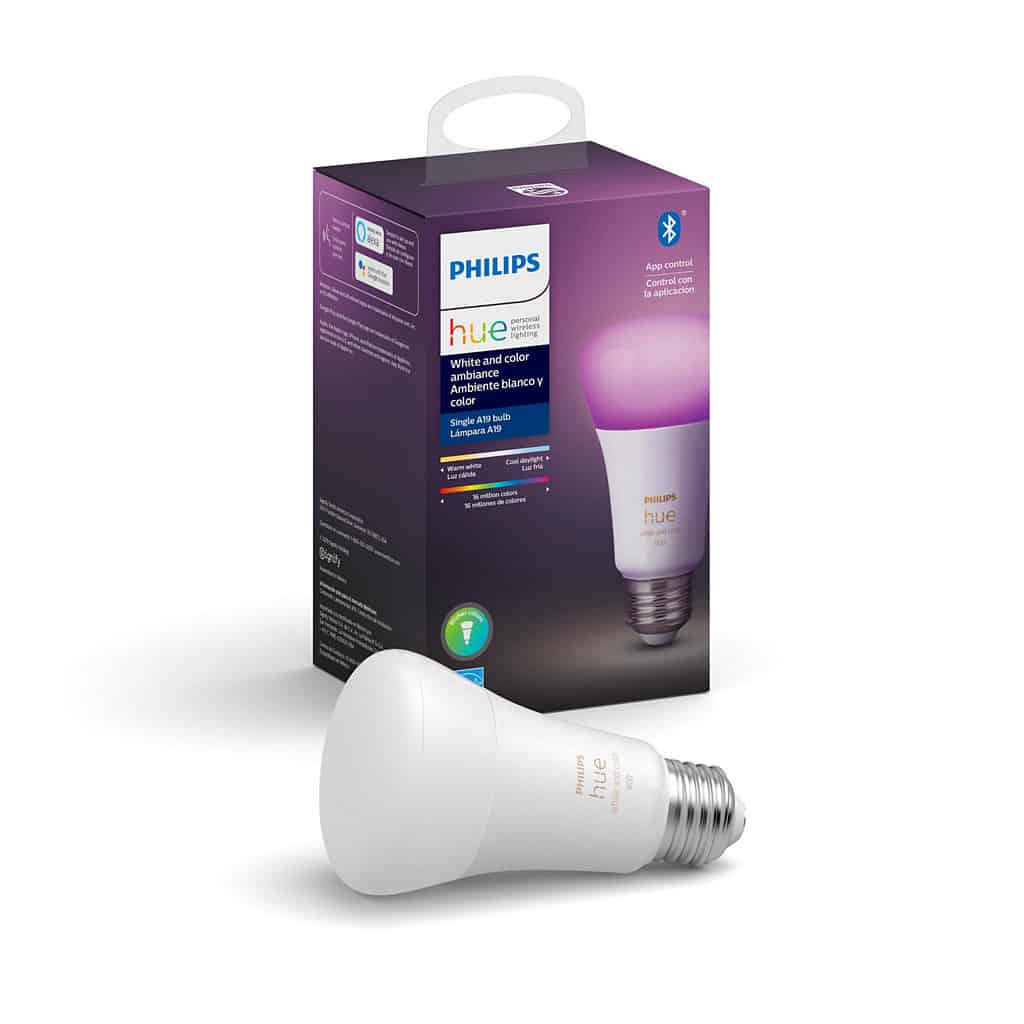
How to Control Smart Lights
Mobile apps aren’t the only way that people can control their smart lights.
- Mobile app: Of course, many people will use the mobile app to control their smart lighting, especially when they’re not at home. Ever wondered if you remembered to turn out the lights before you left for work? Now, you can check on your phone … if you have smart lighting, that is.
- Voice commands: Smart lighting often integrates with voice assistants like Alexa, Google Assistant, Siri, or Microsoft Cortana. If you’re home and near your smart speaker, it’s easy to control smart lighting using your voice alone.
- Schedules: Some people put their smart lighting on schedules so it’ll turn off and on at preset times throughout the day, not requiring any manual input from the user.
- Geofencing: Geofencing means that the smart lighting is connected to the GPS in your phone, so the lighting will turn off when you leave and turn on when you get home.
- Sunrise/sunset: A few smart light bulbs and lamps that we’ve tested sync with the sunrise and sunset, helping you adhere to your circadian rhythm.
- IoT triggers: Many smart lights can be triggered by other IoT devices like smart locks or security cameras. For example, we have our outdoor lights turn on whenever our outdoor camera detects motion (when it’s armed). This means that potential intruders won’t get too far, as our bright spotlight will highlight their every move. Learn more about the best smart home devices that you can pair with your smart lighting.
- Physical switches: Not everything needs to be connected to the internet! Most smart lighting still allows for the use of physical light switches, the same ones you use with regular old incandescent bulbs. This is especially useful if your Wi-Fi goes down.
Smart Lighting Features
After testing dozens of smart lighting bulbs and lamps, we’ve evaluated them for their key features, which include the following:
- Connectivity: By connectivity, we mean how the smart lighting connects to the internet. Typically, this is Wi-Fi, although Bluetooth, SmartThings, Z-Wave and Zigbee are also available.
- Dimmable: We could dim most smart lighting to suit our mood and the weather, whether it was mood lighting for a romantic dinner or bright lighting to keep us awake while we crammed for a test.
- Color: Bulbs can be white or colored, which means that they can switch to over 16 million different colors. It’s fun to create different moods with various tones, so we recommend getting color bulbs for more options.
- Brightness: Brightness is measured in watts, and most of the smart lighting we tested had around 60W.
- Shape: A19 is the standard bulb shape that you’ll find in 99 percent of smart bulbs.
- Lamp base size: Typically, A19 bulbs have lamp base sizes of E26.
- Schedules: Most smart lighting can be put on a schedule so you don’t have to turn it on and off manually.
- Scenes: Scenes are groups of smart lighting that can be changed at once. They’re often set in specific colors or brightness so that you don’t have to reinvent the wheel every time you want to turn on the lighting for your TV time.
- Energy monitoring: Energy monitoring means that the app tracks the smart lighting’s energy usage. Unfortunately, this feature isn’t super common, although we’d like it to be.
- Sunrise/sunset mode: Some smart lighting can be set to sync with the sunrise and the sunset, changing slightly with the weather throughout the year.
- Geofencing: Some people connect their smart lighting to their mobile devices’ GPS so that it adjusts based on their locations.
- Sync with other IoT devices: IoT devices can trigger one another. For example, you could have your smart lighting turn on whenever your smart garage door opens.
- Shared access: Typically, multiple users can control smart lighting on their individual mobile apps.
- Smart platform integrations: Most smart lighting is integrated with Amazon’s Alexa, Google Assistant, Apple’s Siri, or Microsoft’s Cortana and can be controlled with voice commands.
Extras
The following features aren’t necessary or common, but we’ve found them in a few smart lighting options:
- Preset themes and animations: Too lazy to adjust your bulbs’ dimness and color? Some companies offer certain built-in themes with their apps, while others have animations, which are changing lights designed to create a ton of atmosphere.
- Infrared light: Got infrared security cameras? We’ve only seen one smart bulb with infrared light (the LIFX Nightvision A19), but it’s meant to help security cameras with their night vision.
- Syncing with movies and music: For a dramatic effect, some smart lighting can adjust based on the movies and TV shows you’re watching or the music you’re playing.
Do Smart Bulbs Need Hubs?
While some smart bulbs require separate bridges or hubs to connect to the internet, some simply require an internet connection and a mobile device. For example, the Kasa Smart TP-Link Bulb doesn’t need a hub, but the Sylvania Osram 65W Bulb needs a hub from Wink, Zigbee, or SmartThings.
Pro Tip: If you already have a smart home hub, look for smart lighting that works with it so you don’t have to buy a new one. Another option is to buy a bulb that doesn’t require a hub.
Do Smart Bulbs Use Power When They’re Off?
After seeing last month’s electricity bill, we were trying desperately to find ways to lower our energy usage. While we’ve heard that LED bulbs use less energy than incandescent bulbs, we also know that smart bulbs use electricity even when they’re in standby mode, or off. That’s because even when they’re not in use, they’re still connected to the internet, able to be turned on at any time. This type of device is called a vampire device, and the average U.S. home has 65 of them. Altogether, these vampire devices cost homes an average of $165 per year. However, the costs from Bluetooth-enabled smart light bulbs only accounted for $1.50 to $4 per bulb per year,2 which we consider negligible. Whew!
What Are Vampire Appliances?
No, we’re not talking about “Twilight.” Vampire appliances are appliances that use electricity even when they’re off, also called phantom loads or standby power. Smart lighting isn’t the only type of vampire appliance. These are also vampires:
- TVs
- Computers
- Microwaves
- Security systems
- Security cameras
- Video doorbells
Does Smart Lighting Save Money?
Even with standby mode taken into account, smart LED bulbs will save you money over incandescent bulbs simply because they use less energy. LED bulbs use 25 to 80 percent less energy than incandescent bulbs, lasting three to 25 times longer on average. In fact, bulbs certified by Energy Star can save you $75 a year, which could pay for the cost of the bulb itself.3 Energy-efficient and cost-efficient? Consider us sold.
Summary
We’ll admit it: The initial costs of smart lighting can be scary, especially when we’re paying over $60 for a single light bulb. However, after taking into account the decrease in energy usage, which could save us up to $75 a year (according to the U.S. Department of Energy), we’re convinced that smart lighting is actually cheaper over time. Its convenience doesn’t hurt, either!
Frequently Asked Questions
Our YouTube channel features a few smart lighting reviews, and many of you have questions. Aside from answering your comments on YouTube, we’d like to address them here as well.
